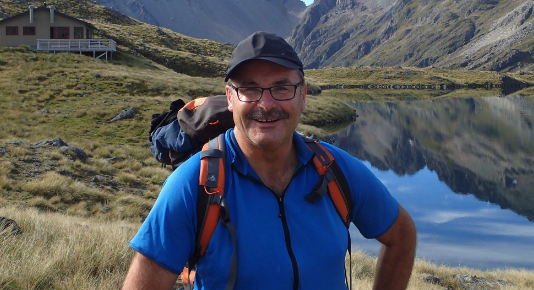Strategic philanthropy – helping bring back the birdsong – By Lou Sanson – DOC Director General

Recently on a weekend I had the good fortune to walk from Awaroa Hut to Anchorage Hut in Abel Tasman National Park. It was mid- winter but glorious sun. What I couldn’t believe was the sounds of bellbird/korimako and tūī especially around Anchorage and Torrent Bay but also Awaroa.
I ran into some of the Abel Tasman Birdsong Trust volunteers who were clearing rat traps and had been working for 10 years doing this. They also told me of the remarkable recovery of bellbird/korimako, tūī, tomtit/miromiro, rifleman/tītīpounamu and fantail/pīwakawaka especially in the last year.
They credited Project Janszoon along with recent aerial 1080 operations to finally making a huge difference after 10 years’ hard work.
The story of Project Janszoon is in itself remarkable. Back in 2012 philanthropists Neal and Annette Plowman agreed to fund the project – aimed at transforming the ecological prospects of the Abel Tasman National Park.
Project Janszoon is a first of its kind partnership at landscape scale where private funding has been invested alongside the work of the Department of Conservation to achieve comprehensive defined outcomes for a national park.
Over the last six years with the assistance of iwi, the Abel Tasman Birdsong Trust, the local community, concession operators and the DOC team, much has changed in the Abel Tasman – as I was to witness on my walk. Wilding conifers have been removed, most other ecologically important weeds are controlled, and predator control for possums, rats and stoats has been extended over 20,000ha.
Since 2014 the project has begun to return species missing, or in low numbers in the park, including South Island robin/toutouwai, yellow crowned kākāriki, saddleback/tīeke, pāteke/brown teal, and most recently kākā. Dune vegetation has been restored and a significant kahikatea forest is being re-established near Awaroa.
Several schools in the Tasman region have embraced the project and adopted parts of the National Park as new learning environments for their students and the Abel Tasman Youth Ambassador programme is building new skills and confidence in our young people.
Our Department of Conservation staff are to be commended for their role in this project. Adopting a new model has challenged conventional thinking for them but all parties are now reaping the benefits of a novel approach to conservation at landscape scale.
There is still much to be done to complete the work in the Abel Tasman but the positive vortex of community support that this work has engendered and the lessons learned bode well both for this park and for other locations where the model can be applied and enhanced.
But for the foresight and generosity of Neal and Annette Plowman I think we would still be “just working on it”. The vision and patience of this humble New Zealand couple has made a huge difference not only to Abel Tasman but to the other environmental initiatives they have gone on to invest in through their strategic philanthropy fund NEXT Foundation.
NEXT is applying the learnings from the Abel Tasman to new projects in Taranaki (www.taranakimounga.nz) and the Mackenzie Country (www.temanahunaaoraki.org), and again the Department of Conservation is partnering with the foundation and other businesses and philanthropic groups on these initiatives to restore biodiversity.
I am looking forward to taking more walks through the Abel Tasman, and other ecologically restored landscapes over the coming years and listening to the return of the birdsong. What a legacy to leave our country and I can only imagine how wonderful it might be for future generations of New Zealanders.